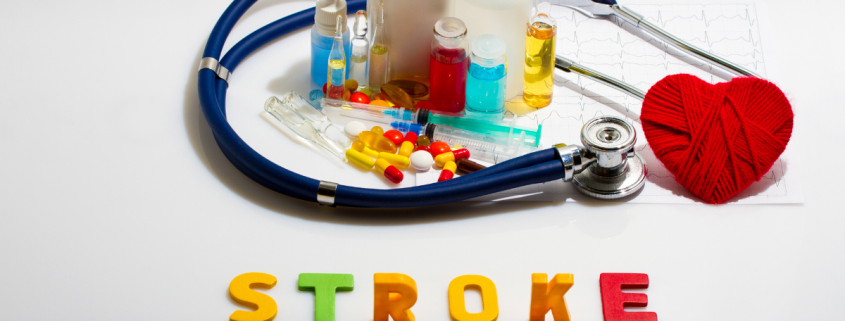Stroke Prevention: Tips for Reducing the Risk of Recurrence
Stroke is one of the leading causes of disability and death, especially in older adults. Additionally, individuals who have already experienced a stroke are at a higher risk of recurrence, which is why prevention is paramount. But before we get into reducing the risk of occurrence, it is essential to understand what can cause a stroke.
Common Risk Factors for Stroke
Anyone can get the disease, but there are certain factors that can increase the risk of stroke in certain individuals. Here are a few risk factors to beware of:
- High blood pressure – High blood pressure can lead to artery blockage or bursting. That can cut the blood supply to the brain, which significantly increases the risk of stroke.
- Smoking – Smoking can damage blood vessels, weakening the blood supply to the brain and increasing the risk of a stroke.
- Diabetes – Diabetes means sugar build up in the blood. High glucose levels in your blood can damage the blood vessels, significantly increasing the risk of a stroke.
- Obesity – Being overweight increases the risk of high blood pressure and a few other medical issues, including metabolic syndrome (characterised by high cholesterol and blood sugar), which are big contributors to stroke.
- High cholesterol levels – High cholesterol levels can lead to fatty deposits in blood vessels, increasing the risk of blood clots and, consequently, stroke.
- Family history – If a close member of your family has had a stroke, you are at a higher risk of suffering the disease as well. So, consider talking to your doctor if your parent, siblings, grandparents, or any other relative has suffered a stroke or heart attack.
Stroke can have life-altering impacts on our lives and those of our loved ones. As such, it is essential to understand these risk factors and how they contribute to the disease to employ the proper stroke prevention measures.
How to Reduce the Risk of Stroke
Now that you know what can cause a stroke, the next step is risk management and prevention. Here is how to prevent a stroke:
Maintain a Healthy Lifestyle
Regular Exercises
Exercising regularly can improve your overall cardiovascular health. It keeps cholesterol levels and blood pressure low, which is essential to ensuring optimal blood vessel function and a lowered risk of a stroke. Some exercises you can do include low-intensity aerobic exercises, strength training, walking, cycling, swimming and yoga.
Eat a Balanced Diet
A balanced diet helps you manage your blood pressure, weight and cholesterol levels. It also provides essential nutrients to improve cardiovascular health and manages diabetes, which are positive steps toward stroke prevention. So incorporate fruits, veggies, lean protein and whole grains into your daily diet.
Weight Management
Managing your weight prevents obesity, one of the leading causes of strokes. You can maintain a healthy weight through regular exercise and maintaining a balanced diet. With a lower weight, you can avoid associated health complications that can cause a stroke.
Manage High Blood Pressure
As mentioned above, high blood pressure can weaken or damage blood vessels, restricting the flow of blood to the brain and increasing the risk of a stroke. Therefore, managing high blood pressure is another important step toward stroke prevention. Here are a few ways to manage high blood pressure:
Adhere to Medication
Adhering to prescribed medication, such as blood thinners and antihypertensive drugs, can help keep high blood pressure in check, minimising the risk of a stroke. So ensure you consistently take your medications as instructed by your doctor.
Reduce Sodium Intake
High sodium levels in the body can cause the body to retain too much water, which impairs the function of blood vessels. It also disrupts the balance of hormones responsible for blood pressure regulation, thus increasing the likelihood of high blood pressure and, consequently, stroke. So, reducing sodium intake by avoiding processed foods and limiting added salt in meals can help prevent a stroke.
Manage Stress
Stress can lead to elevated blood pressure and impaired blood vessel function, significantly increasing the risk. So, it is essential to adopt stress management techniques, such as exercise, relaxation, meditation and joining support groups, to lower the chances of suffering a stroke.
Additional Tips on How to Prevent a Stroke
Besides maintaining a healthy diet and managing high blood pressure, these are the additional tips on how to reduce the risk of stroke;
- Quit smoking – Smoking can increase the risk of stroke by elevating blood pressure, damaging blood vessels and reducing blood supply to the brain. So, if you are a smoker, consider the help of healthcare professionals, smoke cessation programs and helplines to help you quit smoking.
- Control diabetes – Diabetes is a condition caused by high glucose levels in the blood. Too much sugar in the bloodstream can damage the vessels, which increases the risk of diabetes. So, it is essential to exercise daily, eat a balanced diet and monitor blood sugar levels to keep diabetes in check.
- Monitor cholesterol levels – High cholesterol levels can lead to blockage in blood vessels, which elevates the risk of a stroke. Consider regular exercise and regular checkups to keep cholesterol levels in check.
- Limit alcohol consumption – Excessive alcohol consumption encourages the formation of blood clots and elevates blood pressure, which increases the risk of stroke. So, if possible, abstain from alcohol consumption or limit intake to moderate levels.
- Go to regular medical checkups – It is also essential to go for routine checkups and screening to identify stroke risk factors and manage them before they get worse.
Conclusion
Preventing the risk of stroke is essential to maintaining a healthy and fulfilling life. Some risk factors to manage include high blood pressure, obesity, high cholesterol levels and diabetes. It is crucial to also adopt a lifestyle change, including reducing alcohol intake, exercising regularly and maintaining a balanced diet.
Stroke can have life-altering effects on its victims, and it is essential to know how to care for stroke patients at home. Luckily, there are plenty of online resources on stroke home care for individuals that have experienced a stroke. Contact Veritas Care today for more information on complete care assessment for stroke survivors.















